Ahead of his first exhibition in India, iconic German video artist Marcel Odenbach talks of drawing aesthetic inspiration from the corners and contours of Mumbai during a photo walk
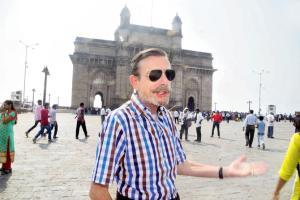
Cologne-based Marcel Odenbach has pioneered video art. Pics /Atul Kamble
I hope we're not dead before getting to the Gateway!" It sure is a hot day, and we find ourselves in agreement with Marcel Odenbach, as we head out of the Taj Mahal Palace. The German artist is no stranger to the country having travelled across Kolkata, Chennai and Delhi. But he is particularly modest when speaking of his own works that encompass the social and political rhetoric — the Nazi rule or the genocide in Rwanda, for instance. Odenbach's oeuvre uses archival material, television footage as well as self-produced pictures, spanning across video art and digital assemblages or collage-like compositions, although he is considered a pioneer in the former.
ADVERTISEMENT
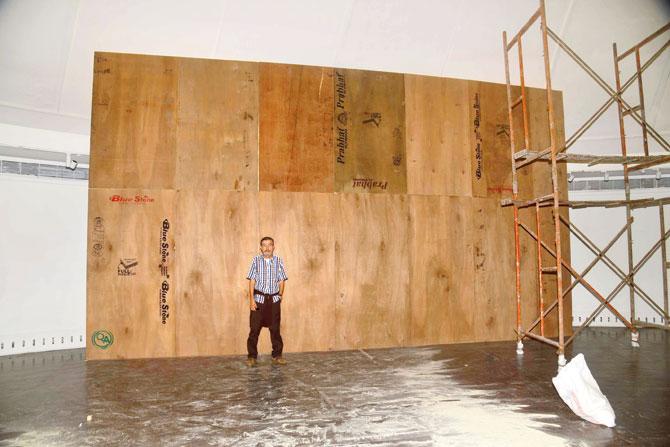
Tranquil Motions will be Odenbach’s first exhibition in India and highlights complex political and social issues through video art and paperwork. This entailed the construction of gigantic walls
As we walk towards the Gateway of India at Apollo Bunder, he recalls his time in Kolkata where he filmed Disturbed Places (2007), a video installation. Mumbai feels different in comparison. "This city is an interesting entrance to India. People often ask me if I like India. But the differences are so huge between cities. You can never say you know India. In Mumbai, you have the traditional and modern fused together, so as a visual artist there's a lot to discover," he tells us.
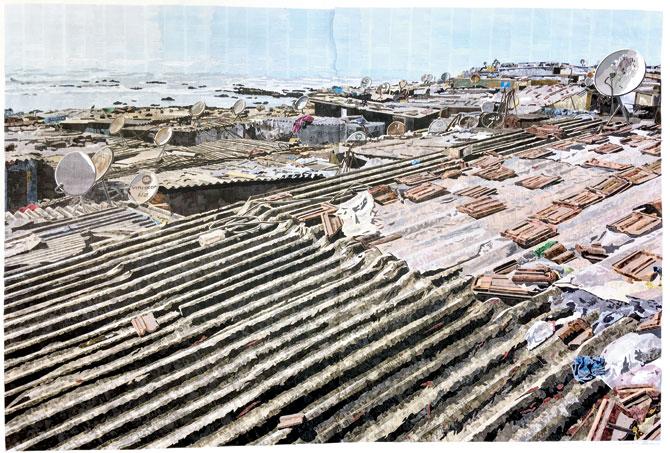
The view from Banganga Tank in Walkeshwar that turned into a digital assemblage — a collage-like composition with handiwork. The piece revealed exclusively to mid-day took Odenbach three months to create, after his trip to Mumbai last year.
Delivering a lecture today at the Max Mueller Bhavan on the Narratives of Contemporary Art, the 65-year-old will also have his first exhibition in the country, Tranquil Motions, at the NGMA this weekend, which is our next stop. Greeting the guards and workers enthusiastically, he receives a warm welcome in return. The retrospective has been organised by Institut für Auslandsbeziehungen, that works on exhibitions of legendary German artists. Gigantic wooden grids lie on the floor to set up his installations and projections, and the team has a short deadline. But Odenbach is delighted with space; exploring every inch as if seeing it for the first time. "I like the dialogue between the exterior and the interior. The show often travels across countries and I sometimes wonder why I have to be present every time. But no, it's always a new show because the air of the space is always different," he explains.
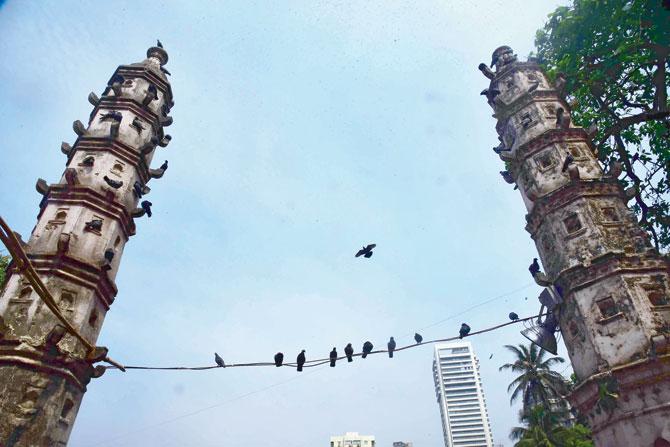
The artist is inspired by Mumbai’s fusion of the traditional and modern space — a view that can be captured by the Banganga Tank with ancient temples and neighbouring skyscrapers
We arrive on the top floor and Odenbach is filled with awe on seeing the dome. "All my work deals with architecture, so it is important where you see them. My piece Turning in Circles details the concentration camp in Poland and the camera in the film moves around the monument in circles. This floor resembles that," he says. His statement becomes clear when we see the inspiration of his most recent work in front of us. We walk around the Banganga Tank in Walkeshwar, and slip into silence. Odenbach paces himself as we walk up a flight of stairs. We look and find the sea, embraced by endless roofs. Pointing to advertisements on the antennas, he turns to say, "It's funny isn't it? You can see the outside of those living inside."
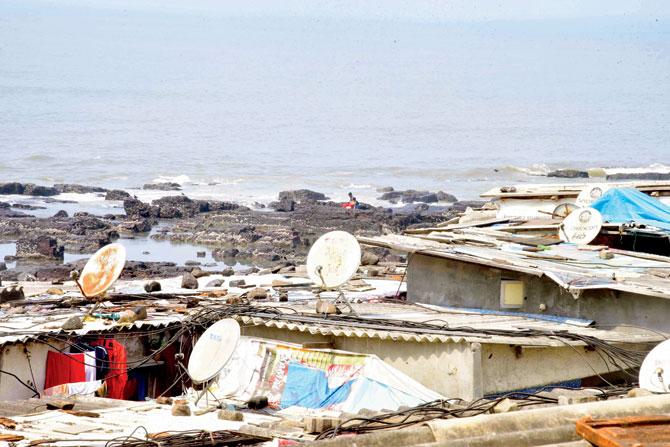
The view from Banganga Tank in Walkeshwar
Today: 6.30 pm
At: Library, Max Mueller Bhavan, Kala Ghoda.
Call: 22027710
Catch up on all the latest Crime, National, International and Hatke news here. Also, download the new mid-day Android and iOS apps to get the latest updates
 Subscribe today by clicking the link and stay updated with the latest news!" Click here!
Subscribe today by clicking the link and stay updated with the latest news!" Click here!






